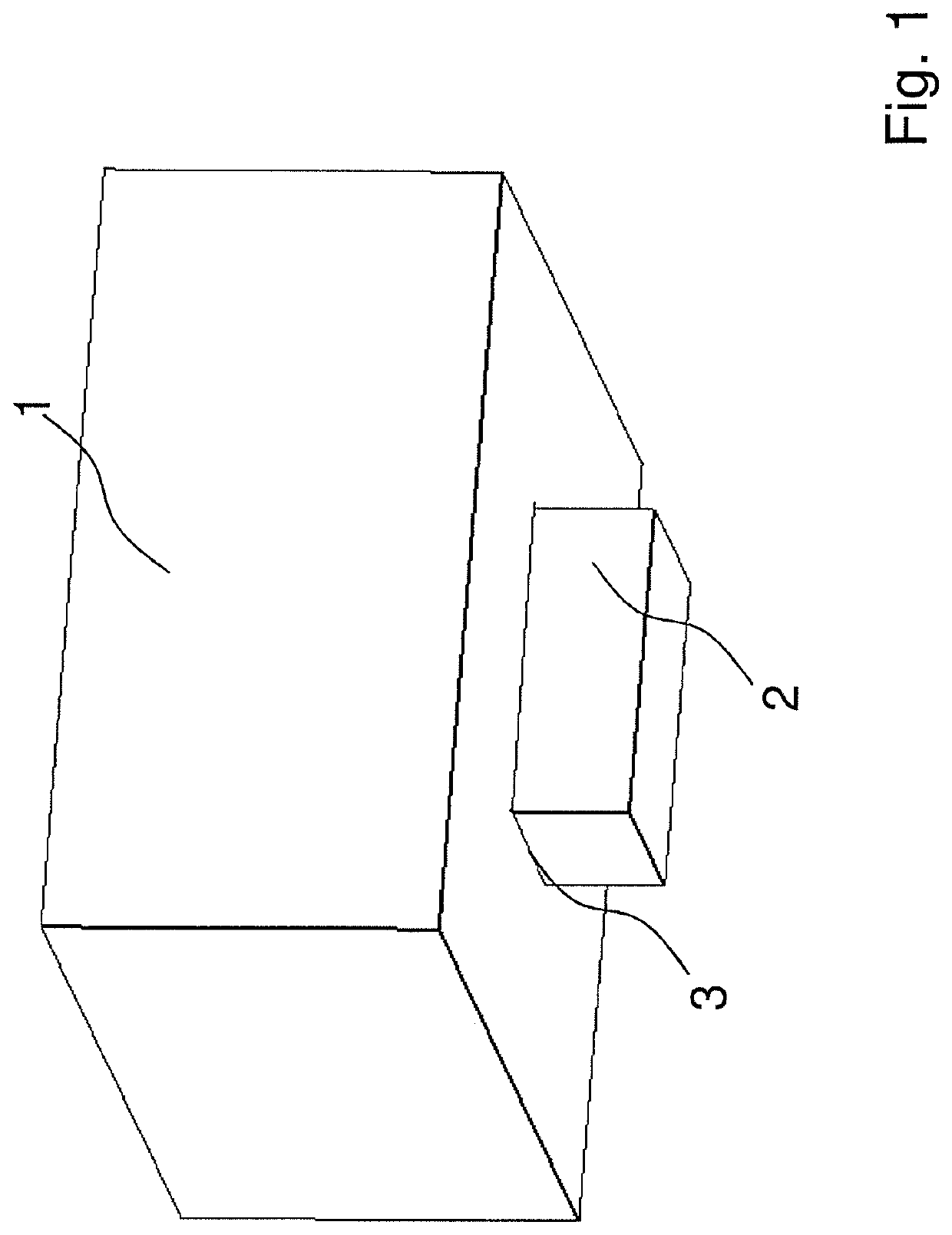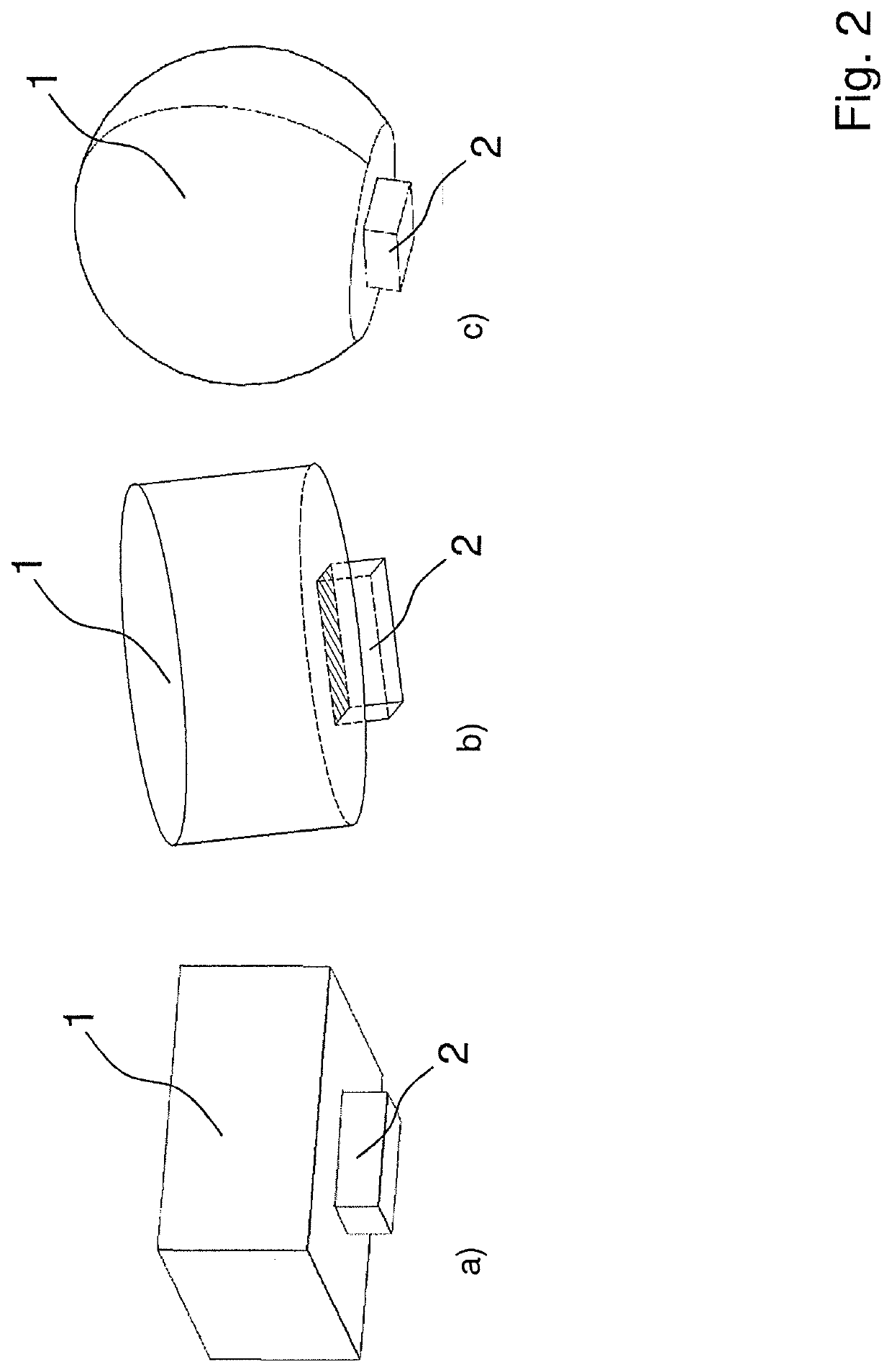RF frontend interface for a 61 GHz radio powered communication tag device
a radio-powered communication and frontend interface technology, applied in the direction of slot antennas, record carriers used with machines, antenna supports/mountings, etc., can solve the problem that the nfc communication solution cannot be downsized to the level of an integrated circuit, the antenna matching circuit cannot provide high q circuit elements, and the integrated circuit design of low loss antenna matching circuits cannot achieve the effect of maximum performance and lowest cos
- Summary
- Abstract
- Description
- Claims
- Application Information
AI Technical Summary
Benefits of technology
Problems solved by technology
Method used
Image
Examples
Embodiment Construction
[0047]In a preferred embodiment of the inventive RF frontend interface for a 61 GHz radio powered communication tag device the resonant body 1 or dielectric resonator as shown schematically in FIG. 1 is mounted on top of a silicon die 2 to support the antenna performance against the conductive bulk material and to serve as a mechanical carrier. The dielectric resonator material has been chosen with a dielectric constant of 5 or higher. Since most of the plastic material in daily life have dielectric constants smaller than 4, the bodies resonance and radiation properties are barely affected when the tag is mounted in most of the daily life materials. At the same time, only the dielectric resonator 1 must meet the size requirements for free space radiation and can be made of much cheaper material than the integrated circuit. This will allow further reducing the required silicon die 2 size and therefore the costs.
[0048]FIG. 2 shows different resonator body 1 shape variants. As typical ...
PUM
 Login to View More
Login to View More Abstract
Description
Claims
Application Information
 Login to View More
Login to View More - R&D
- Intellectual Property
- Life Sciences
- Materials
- Tech Scout
- Unparalleled Data Quality
- Higher Quality Content
- 60% Fewer Hallucinations
Browse by: Latest US Patents, China's latest patents, Technical Efficacy Thesaurus, Application Domain, Technology Topic, Popular Technical Reports.
© 2025 PatSnap. All rights reserved.Legal|Privacy policy|Modern Slavery Act Transparency Statement|Sitemap|About US| Contact US: help@patsnap.com



